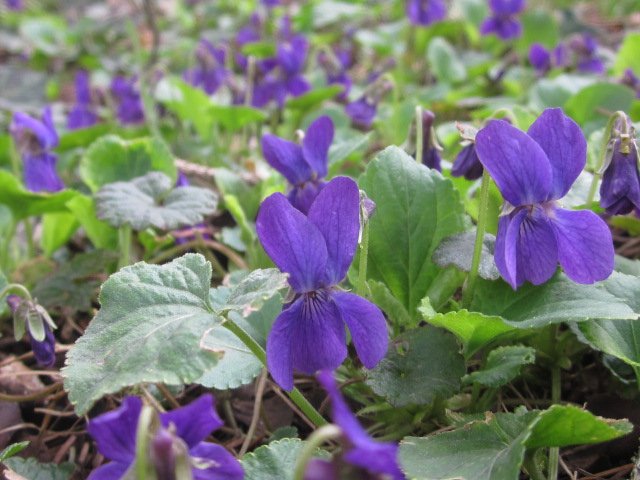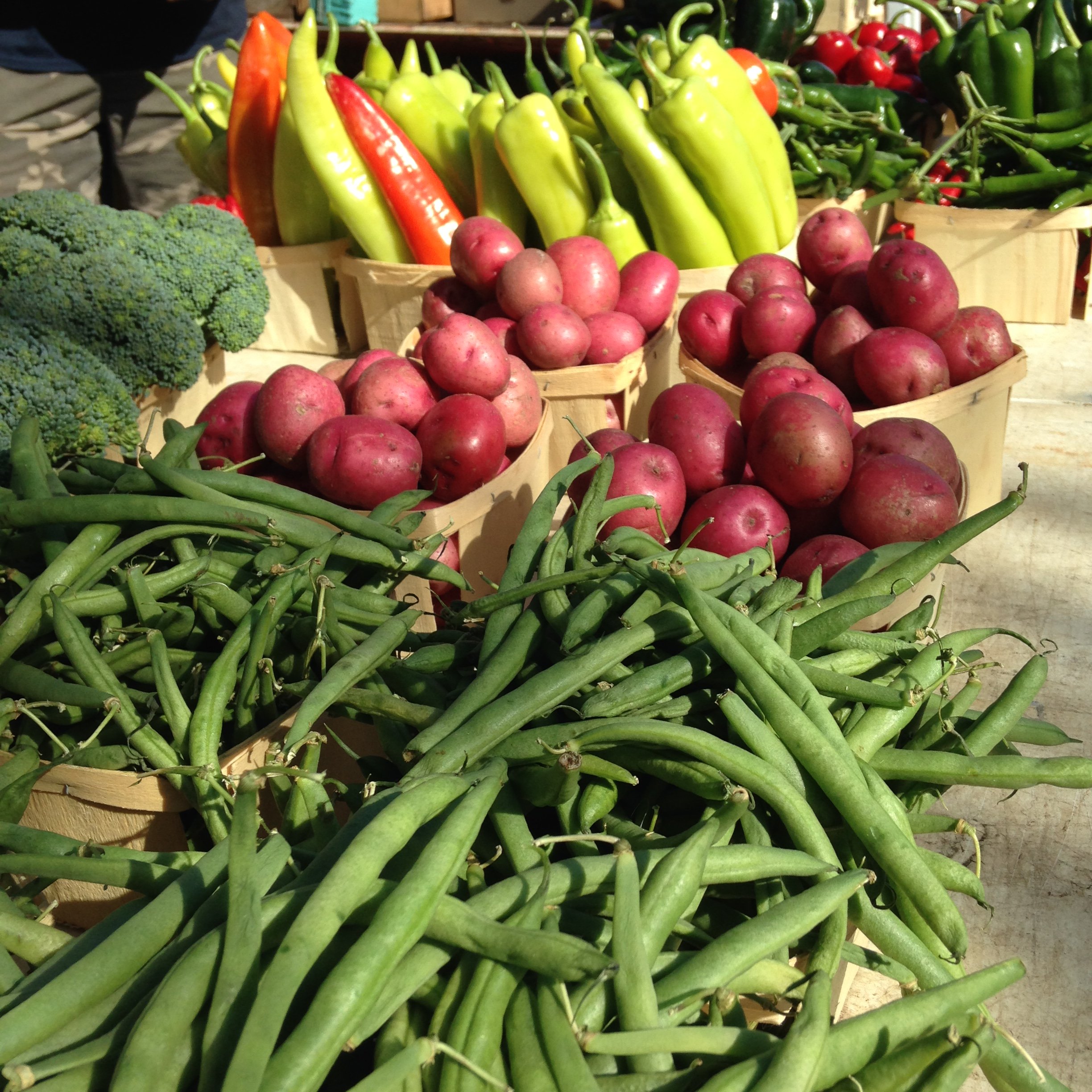Taking a break
I’m as passionate as ever about gardeners and foragers accessing the information they need to safely harvest food and medicine. And, I’m feeling led to focus on other projects in 2024.
Antibiotics in Soils + Practical Takeaways with Dr. Jane Lucas
According to Dr. Lucas, antibiotics can create “big shifts” in the function of our soils—from nutrient cycling to water retention.
Many seeds and cropping systems use antibiotics. Grass seed is often coated with an antifungal substance, which lands in our lawn soils and beyond.
Interestingly, human-tended lawns have shown the greatest rates of antibiotic resistance--even more than farms.
In this article, I’ll share my main takeaways on antibiotics in soils—including a few hopeful fun facts, and things we can do in response to this issue.
Topsoil Companies Share Sources and Practices in Response to Consumer Uncertainty
This spring, I had the privilege of taking a Newswriting and Reporting class through NYU’s School of Professional Studies. I took the class to improve my interviewing skills and learn more about journalism ethics for A Nourishing Harvest.
For my final class project, I wanted to learn more about topsoil available for sale. Where is it collected from? It is processed or amended in any way? Do topsoil companies test for nutrients, pH, heavy metals, and/or other contaminants?
Which Garden Hoses are Our Safest Bet?
When I purchased a new hose a few years ago, a “drinking water safe” label on some hoses caught my eye. Calling those hoses “safe” implies that others are not.
I recalled the interesting flavor of hose water from my childhood—the terroir of a hot summer day, perfectly paired with freezie pops. Turns out, the je ne sais pas in hose water is the taste of toxic volatile compounds. Is nothing sacred?
In 2016, Ecology Center in Ann Arbor, MI published findings from a study of 32 garden hoses.
PFAS, Part 4: Sleuthing for PFAS in Gerry, NY
If there’s anything I can impart, dear reader, it’s that you are capable of interpreting scientific data if only you are given access. Though I took a few chemistry classes in college, poring over scientific data sometimes makes me “go dead inside,” as Glennon Doyle might say. The gumption to look up the abbreviated measurement units in the Army’s water testing data came on the heels of procrastination. My avoidance was partly rooted in the fear that I wasn’t capable of making sense of what I’d find in these files.
And—when gumption arrived, I made relevant observations about the data that experts presumedly had not noticed themselves.
Celebrating a Heroic Plant Part: the Casparian Strip
The turning of the New Year inspires me to take stock of what I’m grateful for. Giving thanks for what’s working and what inspires me often lends some guidance for the year ahead.
I’ll take this opportunity to sing praises of the beloved plants at the heart of A Nourishing Harvest. Specifically, I’ll explore the workings of a rather heroic plant part when it comes to dealing with environmental contamination: the Casparian strip.
PFAS, Part 3: To what extent are PFAS taken up by plants?
Uptake of PFAS can also vary by plant species, and depending on which plant part we’re looking at. Do PFAS tend to accumulate in some parts more than others?
In general, fruits and seeds tend to have lower concentrations of PFAS than leaves and stems (University of Maine).
PFAS, Part 2: How Do PFAS Interact With Soil?
Before we look at PFAS contamination in WNY, let’s back up and explore whether PFAS contamination in our water and soil is a concern for gardeners.
As discussed in PFAS article 1, PFAS are widespread in the environment and found in virtually all American bodies. In their 2020 PFAS plant uptake review, Costello and Lee note that PFAS are so ubiquitous that “finding pristine soils is rare.”
In this article and the next, I explore these questions:
How do PFAS interact with soil?
To what extent are PFAS taken up by plants?
Chestnut Ridge Park: Rules and Safety for Foragers
Cross country practice often took me past the fire training tower, a structure several stories high along one of the main park roads. As I’ve learned more about PFAS chemicals, I’ve become aware of the toxic legacy left behind by PFAS-containing fire suppression foams. I wondered if these products had ever been used at Chestnut Ridge.
Writing as a “Lay” Gardener
I sometimes feel torn about writing articles for A Nourishing Harvest as a "lay" gardener. Wouldn't this project be more respectable if I had an advanced degree? Wouldn't it be great to come at it with expertise in soil science or environmental public health?
PFAS, Part 1: What are PFAS?
The October 3, 2021 episode of Last Week Tonight put local PFAS contamination on my radar. These substances are used to make products that resist grease, stains, heat, and water, and many of these products are found in American households.
Oliver puts it this way: “A CDC study has found that C8 [PFAS] is now in the blood of 99.7% of Americans. Meaning, at the very least, Vin Diesel and I finally have something in common.”
Picking A Nourishing Harvest back up
Starting in August, my goal is to return to sharing an article a month here on the A Nourishing Harvest website. As always, all articles are free and publicly available.
For those who would like to support this project and receive some fun perks, I've also revamped the A Nourishing Harvest Patreon page. I'm excited to share new bonuses with patrons.
Foraging in Falconer Village Park
I recently spoke with Carl Caprino, a supervisor with the Falconer Village Department of Public Works, to learn about management practices at Falconer Village Park and whether foraging invasive and non-native species might be allowed.
Foraging at Greystone Nature Preserve
Located on Chautauqua County's Niagara Escarpment, Greystone is nestled amongst rolling hills and offers a stunning view of Lake Erie. Diane and Bill are passionate about connecting fellow humans to the natural world, and they welcome folks of all ages and styles to participate in nature-based programming.
Greystone's seventy-five acres is home to its share of native, non-native, and invasive plants. In this article, we'll explore the potential for partnerships between Greystone and local foragers.
Pesticides at NYS Schools & Daycares, Part 2: Room for Growth
In the first article in this series, we explored New York's 2010 pesticide law for schools and daycares. This law establishes admirable rules for keeping outdoor spaces safe, and the New York State Department of Conservation (DEC) has offered equally stellar guidance for choosing alternatives to conventional pesticides.
However, Beyond Pesticides has suggestions to offer New York State to improve these rules, and the safety of school and daycare communities. We'll explore those recommendations in this article.
Pesticide Laws for NYS Schools and Daycares: Part 1
As an herbal medicine and foraging instructor, I have partnered with numerous school districts in Western New York to offer wild edible and medicinal plant classes. Many continuing education participants and kids in science class or summer school have explored school property edges with me, plucking self-heal and linden flowers to nibble.
I've heard mixed information about pesticide application regulations at schools and daycares. Here, I'll share my findings on what's currently on the books in New York State.
Pesticide Free-Zone: Guide for Land-Tenders
Though the manual's information on tending a chemical-free lawn and the dangers of pesticide use is valuable, what caught my eye was the list of tips for how to talk to one's neighbors about choosing not to spray. I find our political climate frustrating as it grows increasingly divisive. Representatives fail to work together to serve their constituents, and folks' opinions are reinforced by insular social media feeds. The tips shared in this manual are good advice in general for conversations with folks who may not agree with us.
What are the "Other" Ingredients in Lawn Care Products? Inerts & Adjuvants
Take a gander at the ingredients on an herbicide or pesticide label and you'll note that "other" or "inert" ingredients significantly outweigh the active ones.
So what's in there?
Lawn Chemical Safety: Using Critical Thinking
If you casually surf the web to learn about the safety of a particular lawn chemical, you may walk away feeling comforted by information provided by the US EPA or the company selling the chemical. However, there's a solid body of research indicating that the health and environmental problems associated with these products are cause for concern. What's with the conflicting information?
In this article, I'll explore some factors that contribute to our haziness around lawn chemical safety. Understanding these variables allows us to read safety claims with a critical eye.
How Come Herbicides Don't Kill the Grass?
Working for three organic or naturally-grown veggie farms taught me plenty about quality compost, foliar feeding with seaweed emulsion, mulching and intercropping to suppress weeds, and encouraging beneficial insects for pest management. However, it did not teach me a lick about conventional herbicides.
To gain a better grasp of safety when harvesting in the vicinity of treated lawns--whether physically or time-wise, months or years post-treatment-- I'll offer a series of articles delving into lawn chemicals. Here, we'll look at the categories of herbicides that are commonly used today and how they work.



















